

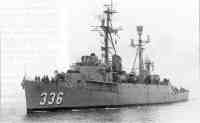
The Pacific Contiguous Barrier extended from Washington State, near Canadian
border, down to central California, with 5 stations for radar picket ships(1,
3, 5, 7 and 9), located 350 km from the shoreline. Like the Atlantic Contiguous
Barrier, each station was initially linked at an ADDC, but, from 1959
the stations 1 and 3 reported to ADDC at McChord
AFB, WA, stations 5 and 7 reported to ADDC at Hamilton
AFB, CA, and station 9 reported to ADDC at Norton AFB, CA. The first
2 DER of CORTRON 5 started the patrolling activity in 1955, but were replaced
between 1958 and 1959 from AGR, while the "WV-2" quadrimotors
were introduced in 1957.
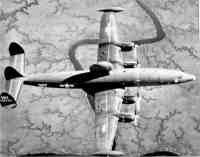
the Pacific Barrier was established on July 1st, 1957, initially for
test purposes. It represented a westward continuation of DEW line, on
a virtual line extending from Kodiak, Aleutinian islands, to Midway island,
Central Pacific. The new barrier, of enormous dimension, was then splitted:
the southern part covered by the "WV-2", and the northern one
by ships. The 5 stations were placed at an interval of 370 km, with the
first at 110 km from Kodiak, and the last 2 mirrored from the "WV-2"
based at Midway. In 1959, due to the improvement of the land based radar
performances, the northernmost point of the Pacific Barrier was moved
from Kodiak to the Umnak Island,
The barrier headquarter (COMBARFORPAC) was established at Barbers Point,
HI.
Initially, only 3 over 5 stations of the picket ships were covered simultaneously by as many DERs, and only in 1959 all of the 5 stations were operating. At the Pacific Barrier were assigned 9 DERs of Cortron 7, flanked by 7 DERs of Cortron 5; the airborne contribution was from WV-1, initially based at Barbers Pont, and then moved to NAS Agana at Guam Island. In January 1956 was established at Barbers Point the COMAEWINGPAC (COMmander Airborne Early Warning wINGg PACific), that covered the barrier until 1965 with 4 or 5 quadrimotors simultaneously in flight, operating from Barbers Point, making a refuelling at Midway (nearer to the southernmost point of the barrier) before starting the patrol activity.
As many people foresought,
the ambitious system of barriers for national aerial defense always suffered
for lack of funds and personnel. US NAVY, that always would stay
out of this concern, or at least reduce its contribution to, still in 1960 officilaly
asked the decommissioning of the whole system, but NORAD pression forced
it to continue. Anyway it was only a matter of years: in 1965 the improvement
of land-based radars, together with a more accurate knowledge about Soviet
arsenals, put an end to the active role of US Navy in continental aerial
defense, and brought to the dismantlement of the structures that were mantained
for over a decade. On April 15th, 1965, USS
Newell (DER 322), started its last radar mission over Pacific Barrier,
which was decomissioned with a ceremony at Midway on May 1st. The Atlantic
and Pacific Contiguous Barriers were closed on June 30th, 1965. COMBAROFRLANT
followed soon, and GIUK Barrier was dismantled on 1st September 1965. With
no more missions to accomplish, COMAEWINGLANT, COMAEWINGPAC and last three
land-based US Navy Early Warning Squadrons (VW11,VW13,AEWTULANT and AEWBARRONPAC)
were decomissioned in 1965. Last COMNAVFORCONAD was closed in Colorado on
September 1st, 1965, and so did the AGRs.
RADRON 1 and 2 were decomissioned during August, and dismantled during early
70's.
At the beginning of 1965 remained in service only 19 DERs, 6 of which over
the GIUK Barrier, 9 over Pacific Barrier, one on patrol over Marianna Islands
and 3 for training purposes. Then the VietNam crisis exploded and DERs were
assigned to Operation 'Market
Time' , in the Southern Chinese Sea: but this is another story .....
Aknowledgements:
Many thanks to Earles L. McCaul for the corrections he suggested.
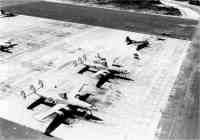
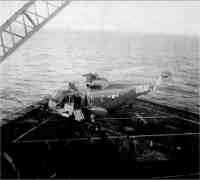
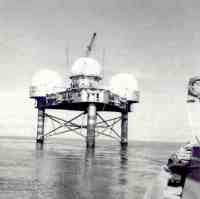
Other links of interest:
Baldur Sveinsson's photos
the Early Warning connection
Texas Towers
DEW Line